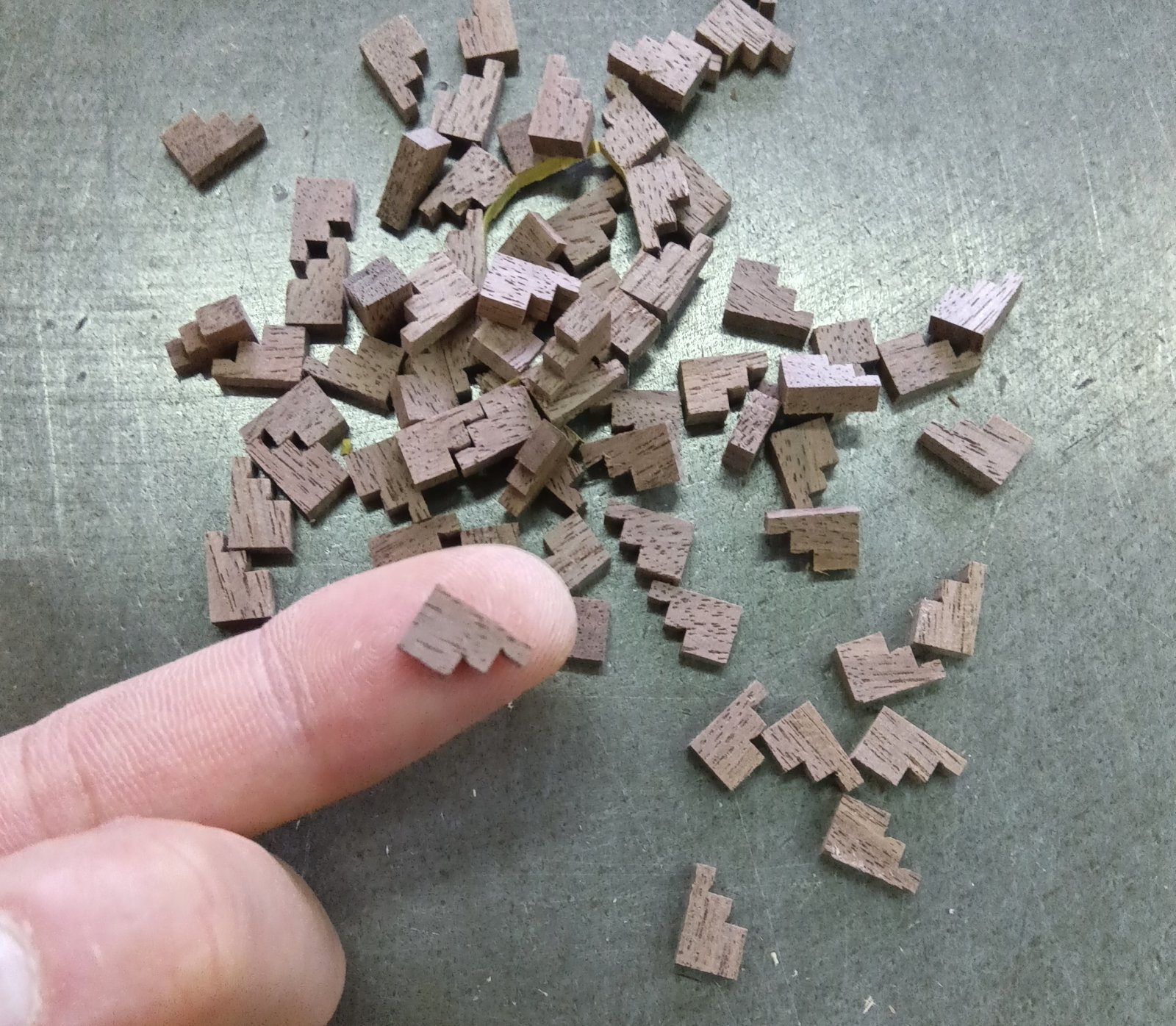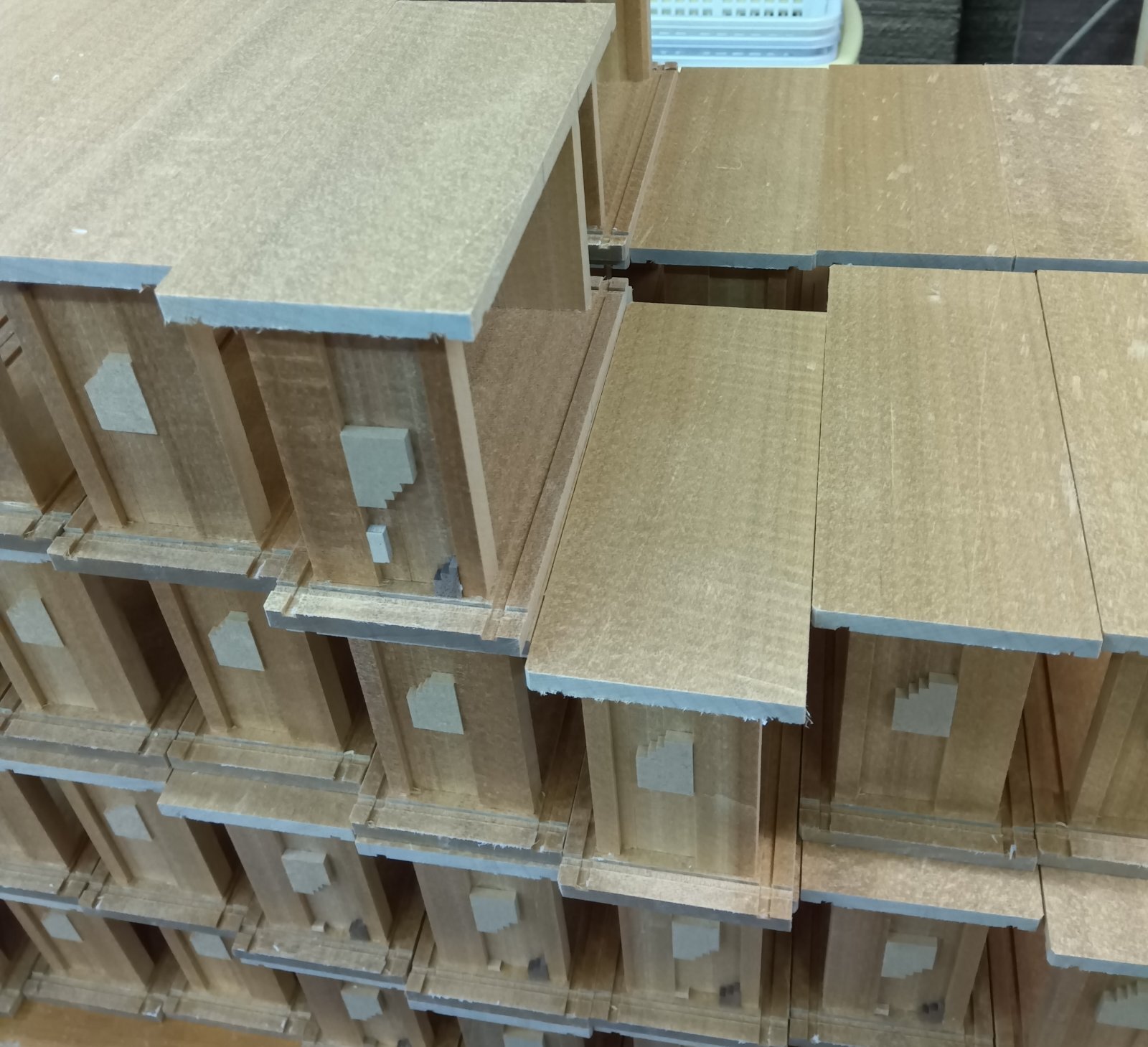5 sun 27 steps box (2)
Today, I continued working on the 5-sun 27-step Japanese puzzle box. Unfortunately, due to a small mistake, the production schedule will be delayed by a few days..sorry😅
The box's frame and some of the intricate internal parts have already been crafted. Since I didn’t have a stock of the small "step" pieces, I had to make them from scratch. These parts are where the internal "bocchi" collide, so I used a slightly harder type of wood. However, using extremely hard woods like Karin, Rosewood, or Purpleheart can cause delicate sections to chip. That's why I typically use Walnut, which is firm but still has some flexibility (photo).
These types of parts are always used in 27-step puzzle boxes, so larger companies might consider outsourcing to other factories to mass-produce them from metal or plastic. This would be more efficient and productive. I once knew a craftsman who outsourced the internal components for puzzle boxes to a metalworking company. He showed me the parts, and they were indeed beautifully and uniformly made. The company used computer-aided machining to create even the smoothest curved pieces. It seemed like they could also produce components for puzzle boxes.
Although this was an attractive option, traditional Japanese puzzle boxes have always been made entirely of wood, and the use of metal parts goes against the craftsmanship we value. Also, the feel and sound of the mechanisms are softer and more gentle when made of wood. That's why, even now, I continue to make all such parts from wood in my workshop.
This time, I was able to acquire a small amount of Katsura wood, which I’m using for the Aruki (moving panels) section. Some may already know, but traditionally, Japanese puzzle boxes were originally made from a Japanese wood called "Katsura". In particular, Katsura from Hokkaido (the northernmost part of Japan) was considered the best in quality. However, due to extensive logging, the price has skyrocketed, and good-quality Katsura is now hard to come by, making it a luxury wood.
The Katsura I’m using this time isn't of the highest grade, but its elasticity and flexible nature make it perfect for crafting Japanese puzzle boxes. In the past, when Katsura was more readily available, I often used it for parts of the puzzle box, much like how I’m using it now. For this project, I’m only using it for the side Aruki😄
The box's frame and some of the intricate internal parts have already been crafted. Since I didn’t have a stock of the small "step" pieces, I had to make them from scratch. These parts are where the internal "bocchi" collide, so I used a slightly harder type of wood. However, using extremely hard woods like Karin, Rosewood, or Purpleheart can cause delicate sections to chip. That's why I typically use Walnut, which is firm but still has some flexibility (photo).
These types of parts are always used in 27-step puzzle boxes, so larger companies might consider outsourcing to other factories to mass-produce them from metal or plastic. This would be more efficient and productive. I once knew a craftsman who outsourced the internal components for puzzle boxes to a metalworking company. He showed me the parts, and they were indeed beautifully and uniformly made. The company used computer-aided machining to create even the smoothest curved pieces. It seemed like they could also produce components for puzzle boxes.
Although this was an attractive option, traditional Japanese puzzle boxes have always been made entirely of wood, and the use of metal parts goes against the craftsmanship we value. Also, the feel and sound of the mechanisms are softer and more gentle when made of wood. That's why, even now, I continue to make all such parts from wood in my workshop.
This time, I was able to acquire a small amount of Katsura wood, which I’m using for the Aruki (moving panels) section. Some may already know, but traditionally, Japanese puzzle boxes were originally made from a Japanese wood called "Katsura". In particular, Katsura from Hokkaido (the northernmost part of Japan) was considered the best in quality. However, due to extensive logging, the price has skyrocketed, and good-quality Katsura is now hard to come by, making it a luxury wood.
The Katsura I’m using this time isn't of the highest grade, but its elasticity and flexible nature make it perfect for crafting Japanese puzzle boxes. In the past, when Katsura was more readily available, I often used it for parts of the puzzle box, much like how I’m using it now. For this project, I’m only using it for the side Aruki😄

